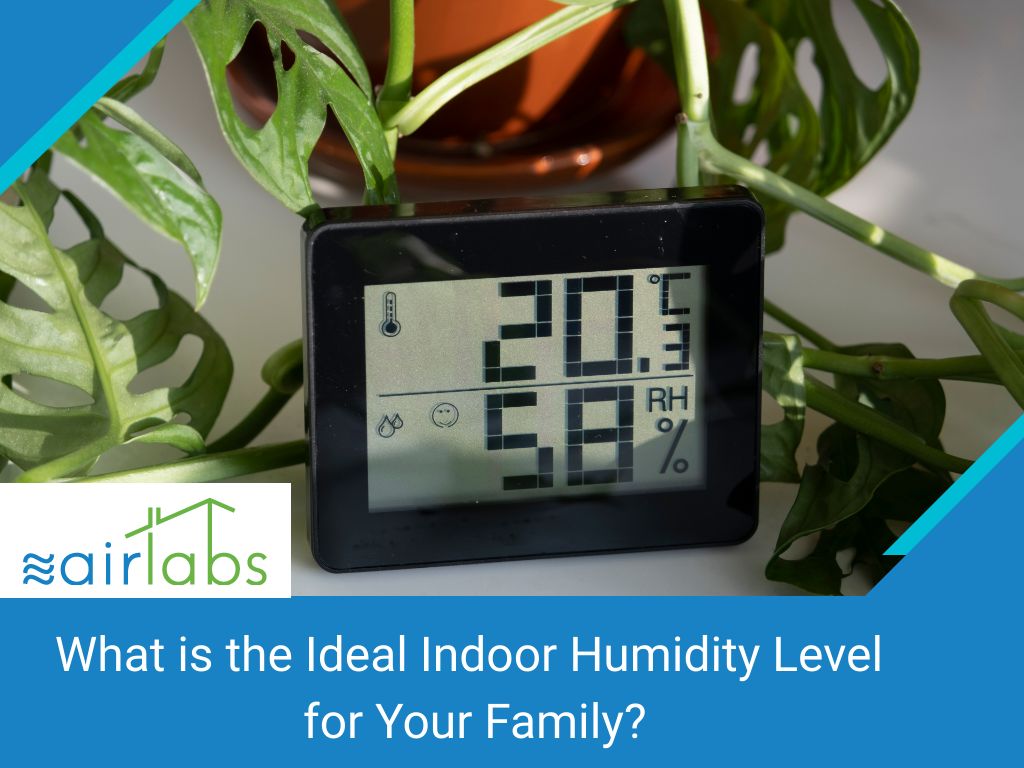Air Labs’ Professional Approach to Mold Inspection and Assessment
Share this Article
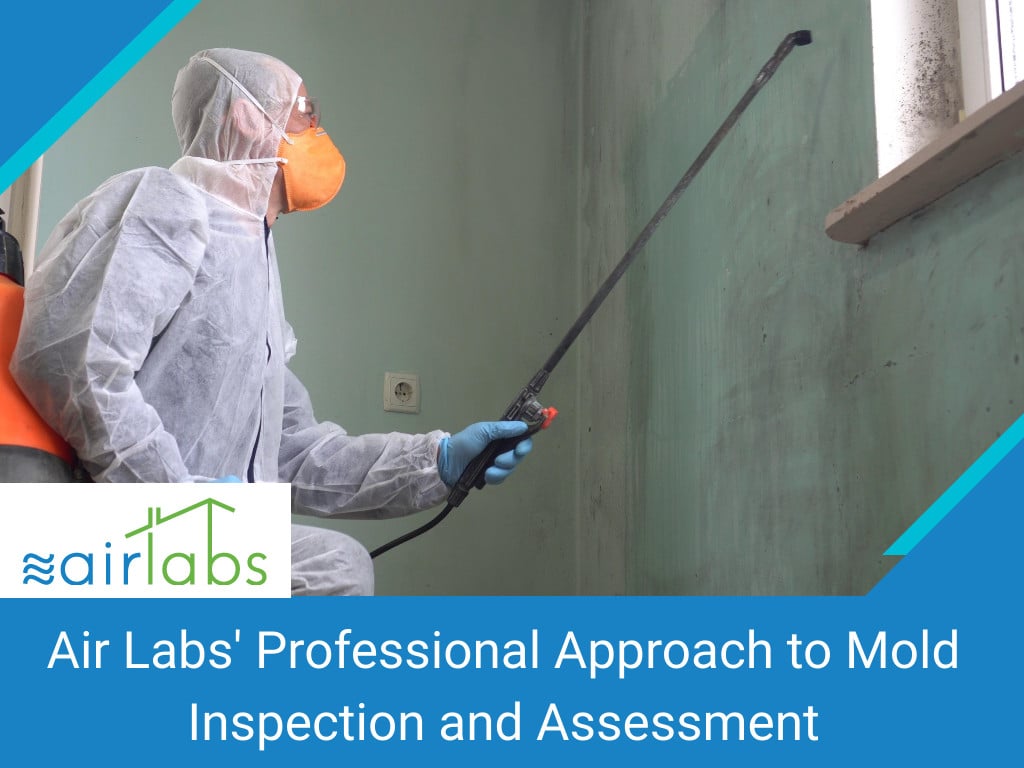
Even a small amount of mold in a home can be hazardous. Prolonged exposure to certain types of mold can cause severe and even permanent health issues. Unfortunately, mold is prevalent in households across the country. It is estimated that 70% of all homes have some level of mold present! What is even more troubling is that you may not see any physical signs of mold in your house until it is too late – which is why it is so important to have a mold inspection conducted in your home.
During a mold inspection, professionals will carefully examine all of the areas where mold tends to accumulate and look for mold growth signs. These areas are tested for all types of mold, including those most commonly found within the home.
Common Types of Mold Found in Homes
- Acremonium: A toxigenic mold that appears as a white powder at first and may turn pink grey, or orange over time. This mold typically grows where condensation accumulates, such as in window sealants, humidifiers, or around cooling coils.
- Ulocladium: An extremely toxic mold that can cause respiratory illnesses or allergies. This type of mold typically appears due to leaks and high condensation levels, often in the basement, bathroom, or kitchen areas.
- Alternaria: One of the most common types of mold is brown or dark green. This mold is usually found in bathtubs or below the sink, as it thrives in dark, wet spaces. Alternaria can spread quite quickly and trigger asthma and other respiratory issues.
- Trichoderma: This allergenic mold grows on wet surfaces, often in HVAC system ducts. This appears to be “fuzzy” and grows in clusters, and it can lead to rot in the walls and flooring.
Aureobasidum: This allergenic type of mold usually grows underneath wallpaper or painted wooden surfaces. This can cause eye and skin infections. - Penicillium: This kind of allergenic mold appears to be soft with a velvet-like texture and is blue or green. In large quantities, this type of mold can cause respiratory illnesses in humans and animals. It is often found in carpets, ducts, and mattresses, especially in water-damaged buildings.
- Fusarium: A toxigenic mold that grows due to water damage and often accumulates in the carpet, wallpaper, or fabric materials throughout a home and food product. This mold can spread quickly throughout the home and can survive cold temperatures. Exposure to this type of mold can lead to significant health concerns, including internal bleeding and nervous system damage.
- Mucor: This allergenic type of mold grows in large, thick patches near air conditioners and HVAC systems. This type of mold must be removed by professionals as exposure can cause severe health problems.
A mold inspection aims to locate the specific areas within the home where mold is growing. If needed, mold inspection and testing can also provide information on the type of mold, cause of the growth, and additional air quality analysis in the home.
Air-Labs has offered home mold inspection and testing for over 15 years in the Montreal, Southern Quebec, and Laval areas. We believe that everyone has the right to know that their home is safe and mold-free. But the only way to know this is by having a professional team of experts inspect all of the nooks and crannies to locate even trace amounts of mold. This is why we take a far more comprehensive approach to the mold inspection process beyond a basic test.
Here is everything you need to know about what happens during a mold inspection, how and when to schedule a test, and why you should trust Air-Labs to do it.
Signs You Need a Mold Inspection
It is always recommended to schedule a mold inspection before purchasing a home to catch any mold growth before moving in. You should also prepare a mold inspection and testing if your home has any water damage from a burst pipe, flooding, or overgrowth of moisture. Additionally, if your home is older or has poor ventilation (particularly in the bathroom or basement), you should schedule regular mold inspections.
If mold growth is caught early enough, it can be safely removed. Mold inspections can also help locate the source causing the development, such as a leaking pipe or concentration of condensation within the HVAC system. By fixing these issues immediately, homeowners can prevent future mold growth.
It is essential to understand what causes mold to form in the first place.
Mold is a type of fungi that emerges from spores that can quickly spread through the air or water. Mold grows best in areas where it receives ample oxygen and water. It typically prefers warmer temperatures. This is why mold is commonly found in the bathroom, as there is plenty of water and moisture and often limited sunlight, which can kill or slow down mold spore growth.
Mold also needs to “feed” off of organic matter, such as wood or paper. Some types can digest synthetic materials, too, like paint or adhesive used for wallpaper. This makes hidden places throughout the home like behind wallpaper, around air ducts, and underneath floorboards the perfect spots for mold to grow.
But just because you cannot physically see mold growing doesn’t mean it’s not there.
So, what are the signs of mold in your house?
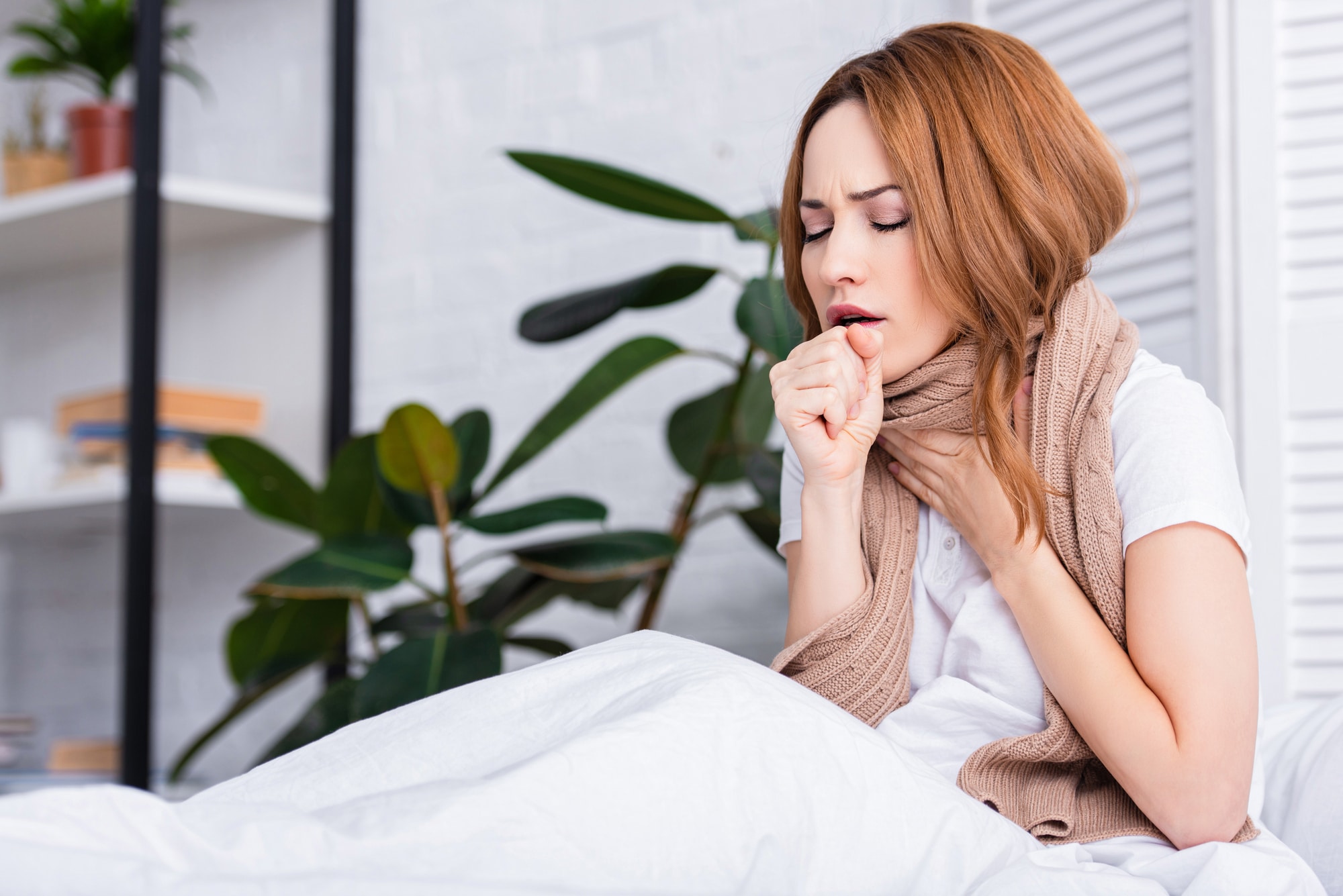
The first sign that indicates a growth of mold in your home is lingering health issues. Most types of mold will cause respiratory problems, which may be similar to a cold or flu. If you or anyone in your family starts to experience continuous coughing, sneezing, itchy or sore throats, or congestion, this could be caused by mold. Other common mold allergy symptoms include eye irritation, sinus headaches, or skin rashes.
An overgrowth of mold can also cause chronic fatigue and sleeping problems. Mold can also trigger asthma attacks or severe infections in people with suppressed immune systems.
Occasionally, mold will emit a musty odor that cannot be removed even after the area is cleaned. If you notice that any area in your home or a section of the wall or carpet seems to be continuously wet or smell musty, you should have it tested for mold.
Household mold infestation is not something that you should take lightly. Prolonged exposure to specific mold types can lead to severe health issues, especially for people with high-risk conditions. Mold spores can suppress immunity, damage the nervous system, and cause irreversible damage to the lungs. Over time, mold can cause an inflammatory response in the body, which impacts brain function. This can even lead to long-lasting cognitive impairment!
It is essential to have a mold inspection immediately if you notice any of these symptoms in you or your family members. The sooner you locate the source of the mold, the sooner you can have it removed.
Air-Labs’ Mold Inspection Process
Mold inspections must be extensive and comprehensive to be effective. Even a tiny amount of mold can spread quickly, so it needs to be identified and eradicated as soon as possible. At Air-Labs, we send a team of experts who have been specially trained to locate spots that are likely to have mold. Our technicians are certified Indoor Environmental Consultants who know all there is to know about household mold and home inspections.
Step One: Conversation With the Homeowner
First, the Air-Labs technician will talk to the homeowner about any areas of concern and ask questions about the property, such as:
- How long have you lived at this property?
- Did you have a mold inspection when you moved in?
- When was the last mold inspection conducted?
- Are there any areas where water damage is present?
- Have you noticed any new musty smells or spotted areas that have been wet or damp for an extended period?
- Are there any areas where you suspect mold may be growing?
Step Two: Walkthrough of the Home
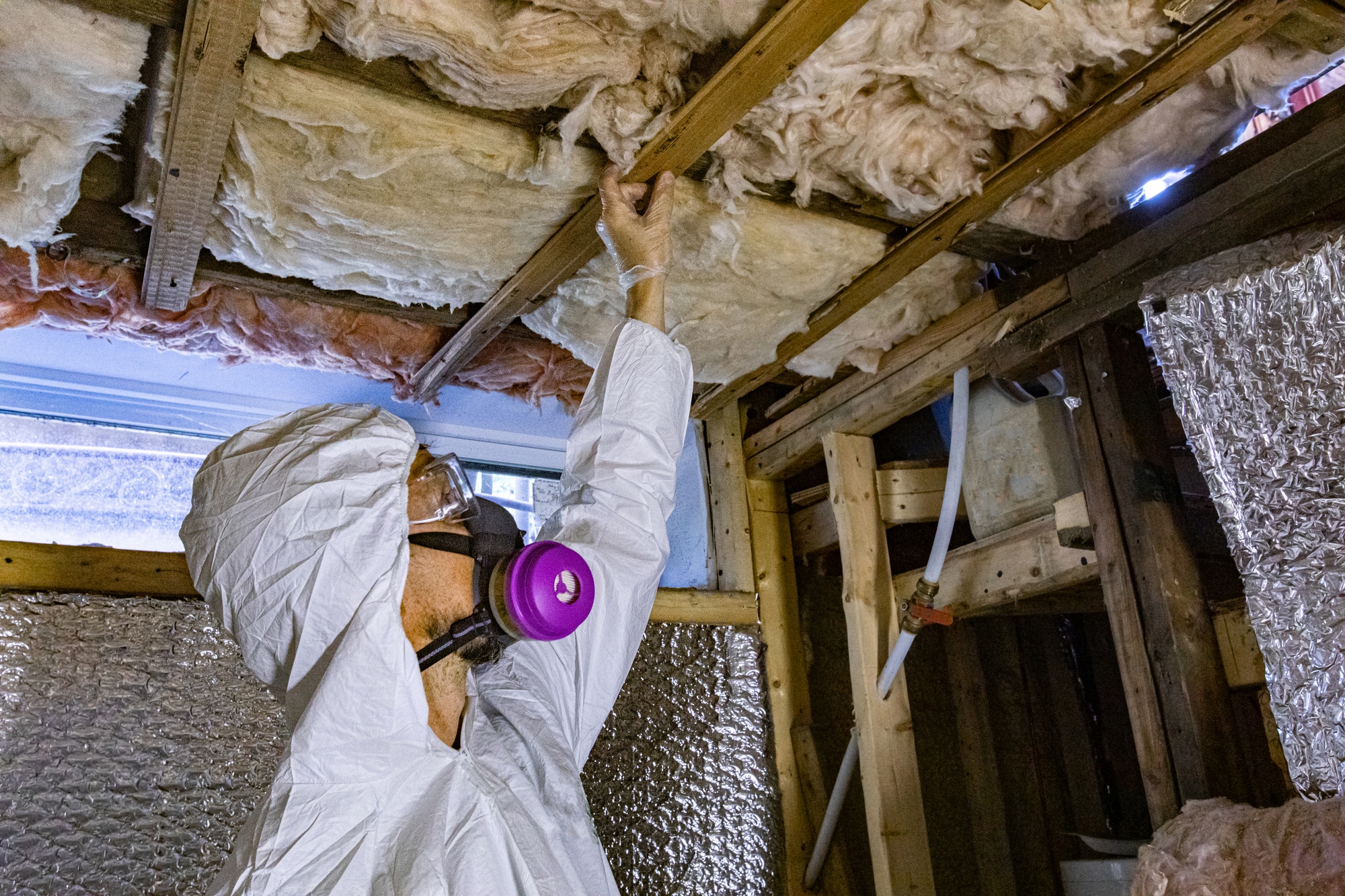
The inspector will then begin by walking through your home and looking for a visible sign of mold or mildew. Air-Labs also utilizes cutting-edge technology to locate mold spores with infrared cameras. This tool can sense moisture pockets with thermal imaging behind walls, underneath floorboards, and in crawlspaces. This signals to the inspector that the area likely has mold growth.
Step Three: Documentation and Data Collection
The technician will then measure the area’s moisture level with a humidity reader and take photos or videos of all findings. The Air-Labs technician will also document all results and gather data to conclude humidity, temperature, dew point, carbon monoxide, and carbon dioxide levels in the home.
Air-Labs technicians use air compressors to sample the air quality in areas with mold, as spores can become airborne. All of this data is recorded and compiled to determine if and where mold is growing.
If mold is not visible but likely present, samples from the area can also be sent to Air-Lab’s facility for testing. This means that carpet or drywall sections may need to be removed, with permission from the homeowner.
All in all, a mold inspection takes between one to two hours, depending on the size of the home. If mold is visibly present, the technician will alert the homeowner so the necessary steps can be taken to schedule safe removal. All of the gathered data will be taken back to Air-Labs for further review and testing.
Fair and Honest Pricing
Once the mold inspection is complete, and Air-Labs has analyzed the data, the homeowner will receive a full report of the findings. This certified report contains laboratory results and images of any mold growth that is found. If any air samples are taken, the report of the air quality will also be included.
Air-Labs is proud to offer a free consultation to our customers if they are concerned that they may have mold in their home. We will gather the relevant information needed to provide an accurate estimate of the mold inspection’s total cost. You can ask our team any questions about the mold inspection process, what to expect, and how to schedule the walkthrough.
Air-Labs also offers additional home inspection services, including:
- Asbestos analysis
- Radon testing
- Formaldehyde, chemical, and volatile organic compounds (VOCs) testing
- Dust and soot
- Water damage
- Indoor air quality analysis
- Post-fire inspection
- Special projects available upon request
All of our reports are certified for accuracy. If needed, Air-Labs can provide expert witness testimony in court proceedings with scientific evidence from these reports. We have worked with tenants, landlords, and homebuyers who require property inspections. Air-Labs also offers inspections for commercial and institutional properties as well as residential.
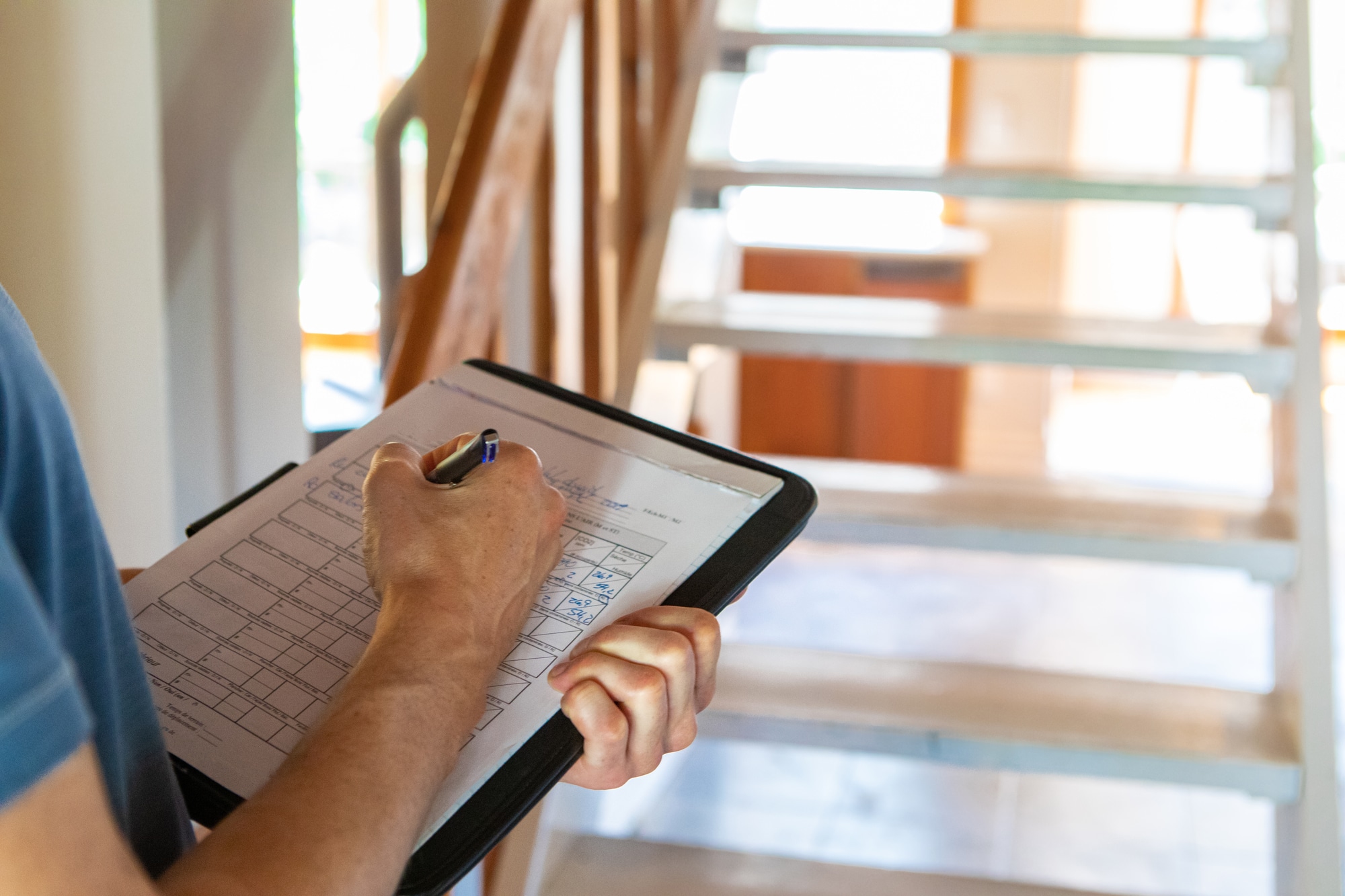
Air-Labs understands the importance of confidentiality. All reports are shared securely and will not be shared with any other parties. Air-Labs has a strict policy to eliminate any conflict of interest and to protect our client’s confidentiality at all costs.
Air-Labs does not offer mold remediation or removal services, but we can provide you with all of the information needed for your next steps. The consultation report contains all of the necessary details for safe mold removal, along with photo evidence and laboratory testing results.
Hire a Team of Experts
Mold inspection and testing require a team of experts. With Air Labs, we have the best of the best. Our inspections are certified and have completed training in mold inspection, identification, and proper testing protocols.
Air-Labs was founded in 1999 and is currently led by Paul Trudel, a certified mold investigator, and assessor. He and the rest of our inspection team are certified by the Indoor Air Quality Training Institute.
All samples are examined in our state-of-the-art laboratory by a team of scientists specially trained for air quality analysis and mold testing. We use the latest technology for the most accurate testing results available. We also pride ourselves on fast, precise results. You can expect to receive your detailed mold testing report shortly after the inspection is completed.
Air-Labs is a proud member of numerous organizations, including the International Society of Indoor Air Quality and Climate and Asthma Canada Alliance. We are proud to be a corporate member of the Indoor Air Quality Association. Air-Labs has a business certification from the Quebec Office of Commercial Certification.
Although Air-Labs does not provide mold removal services, our team will gladly do all we can to help you with the mold remediation process. If needed, we can share all of our findings with your mold restoration contractor.
Conclusion
If you wonder who to call for mold inspection, rest assured that Air-Labs is the right company to trust. We have helped thousands of homeowners, businesses, and property owners identify the source of a mold infestation in their buildings.
We offer mold inspection and testing for residential and commercial properties in the Montreal, Laval, and Southern Quebec areas, including South Shore, North Shore, Longueuil, West Island, Repentigny, Terrebonne, Eastern Townships, Laurentians, St-Jerome, and St-Jean-Sur-Richelieu.
But don’t just take our word for it – see what our clients have to say about our mold inspections and air quality testing services!
If you are concerned that mold may be present in your home, do not delay scheduling an inspection with Air-Labs.
Please contact us at Air-Labs today for a free consultation and schedule a home mold inspection. The sooner you know, the sooner you can remove the mold and have a safe, clean home for yourself and your family.




